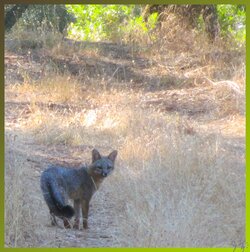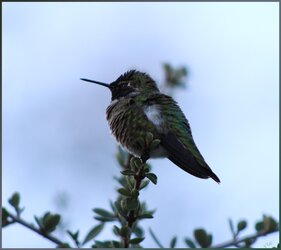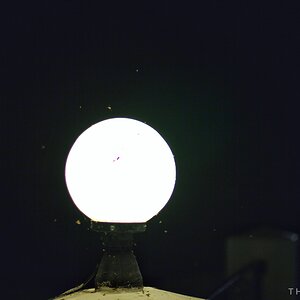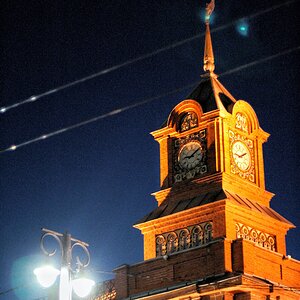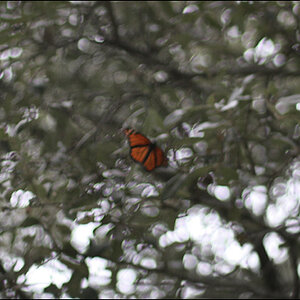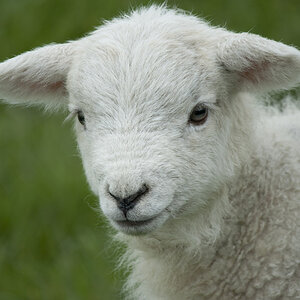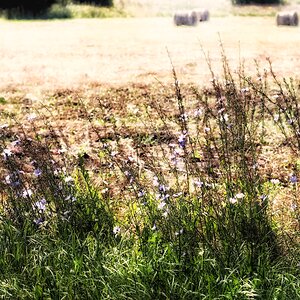vanillakirsty
TPF Noob!
- Joined
- Jan 14, 2015
- Messages
- 1
- Reaction score
- 0
- Can others edit my Photos
- Photos OK to edit
Hello everyone. I am kind of new at photography. For the past few years I have used a tiny Canon PowerShot just as a fun hobby to get photos of wildlife. I never really cared too much about the quality at first. I took many art classes in college including ones that taught photoshop and photo editing. I learned all about balance and how to adjust photos to have better lighting. Before I got my PowerShot camera I never thought much of photography. I used to concentrate more on drawing, but then I found out how fun it was to take photos of animals and wildlife.
Here is a picture I got of a fox with my little camera:

A couple months ago I decided that I wanted to get better at photography and that I needed a professional camera, so I bought a Canon Rebel T5. It came with one telephoto lens (an EF 75-300mm f/4-6.6 III). Since I take photos of wildlife I wanted a lens that could get really good detail from far away. I'm still a beginner, so I don't know anything about lenses. The first day I tried my new camera and telephoto lens I was able to get this picture of a hummingbird:

There is so much more detail in this photo than all of my other photos, just like I wanted, but the zoom on my lens didn't seem nearly good as I expected. I was only about four or five feet away from that hummingbird. I thought I'd be able to get photos like this of things much further away, but my lens doesn't zoom like I expected. I thought telephoto lenses were supposed to have better zoom. It barely zooms in at all... Like I said, I know nothing about professional cameras, so I decided to ask people who can help me. Am I doing something wrong or is there an even more powerful lens someone could recommend? I am so new to all of this. That hummingbird waited there while I got closer and took several pictures, but most animals don't wait. That fox ran away right after I took that picture because he saw me. I would like to learn how to get pictures of animals as detailed as the one of the hummingbird, but without disturbing them.
Something I also learned recently is that I should probably get a monopod or tripod to use with my telephoto lens to prevent my camera from shaking. I prefer a monopod because I think it would be easier. If anyone has one of those to recommend I'd really like that too!
Thank you! I appreciate any help!
Here is a link to my blog where I have been posting the pictures I took with my Canon Powershot. They're all so grainy, but now I would like to learn how to take these kind of pictures with my new camera. Kirsty's Art Trail
Here is a picture I got of a fox with my little camera:

A couple months ago I decided that I wanted to get better at photography and that I needed a professional camera, so I bought a Canon Rebel T5. It came with one telephoto lens (an EF 75-300mm f/4-6.6 III). Since I take photos of wildlife I wanted a lens that could get really good detail from far away. I'm still a beginner, so I don't know anything about lenses. The first day I tried my new camera and telephoto lens I was able to get this picture of a hummingbird:

There is so much more detail in this photo than all of my other photos, just like I wanted, but the zoom on my lens didn't seem nearly good as I expected. I was only about four or five feet away from that hummingbird. I thought I'd be able to get photos like this of things much further away, but my lens doesn't zoom like I expected. I thought telephoto lenses were supposed to have better zoom. It barely zooms in at all... Like I said, I know nothing about professional cameras, so I decided to ask people who can help me. Am I doing something wrong or is there an even more powerful lens someone could recommend? I am so new to all of this. That hummingbird waited there while I got closer and took several pictures, but most animals don't wait. That fox ran away right after I took that picture because he saw me. I would like to learn how to get pictures of animals as detailed as the one of the hummingbird, but without disturbing them.
Something I also learned recently is that I should probably get a monopod or tripod to use with my telephoto lens to prevent my camera from shaking. I prefer a monopod because I think it would be easier. If anyone has one of those to recommend I'd really like that too!
Thank you! I appreciate any help!
Here is a link to my blog where I have been posting the pictures I took with my Canon Powershot. They're all so grainy, but now I would like to learn how to take these kind of pictures with my new camera. Kirsty's Art Trail
Attachments
Last edited:


